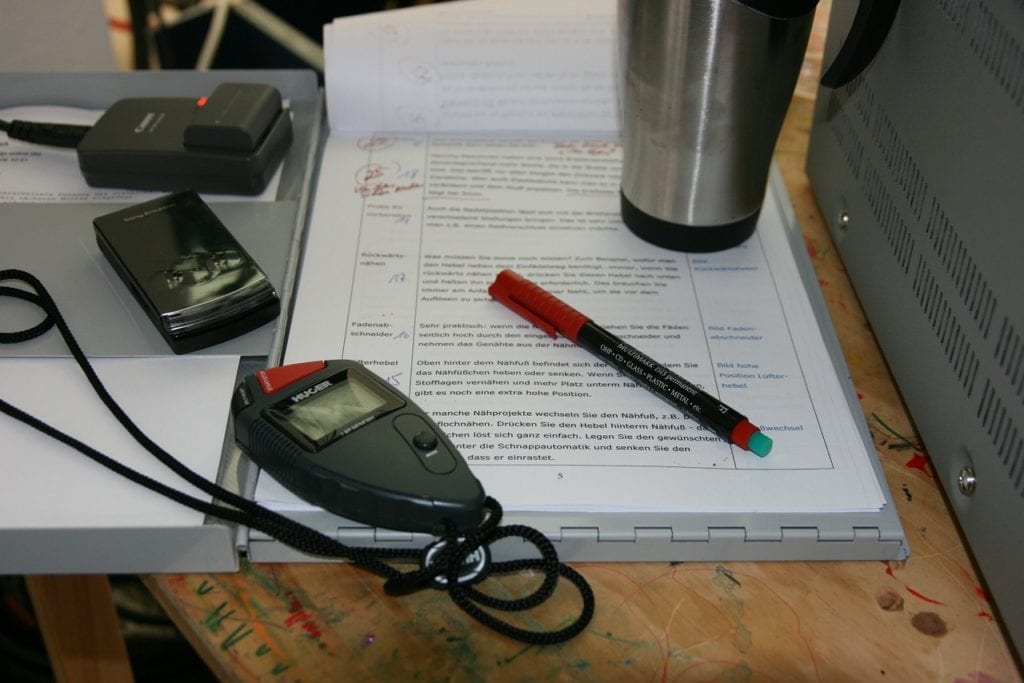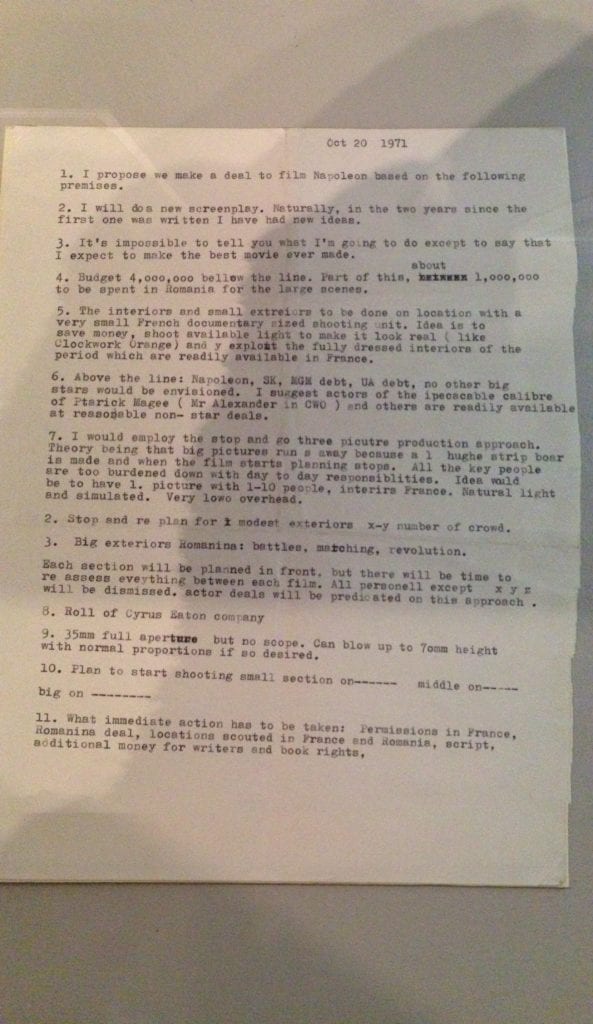Even though it takes an incredible amount of people to create a film, today, we’re going to focus on the writer of the screenplay and the producers.
While the writer gives a tremendous amount of creative power to the film, they also have a strict screenplay format which they must follow when writing their script.
This means capitalizing the right words, formatting dialogue and scene headings correctly, and making sure their writing is as clear and concise as possible.
All of these things make the job of the producer easier, melding their jobs together and creating a cohesive work environment.
If you’re unsure of the role of a producer, MasterClass does an excellent job laying out their responsibilities. The producer’s responsibilities begin with scouting out projects and beginning the process of producing the piece. This means finding funding, hiring a team of writers, creatives, and directors, and being able to oversee all parts of production, including pre and post-production.
In summation, a producer must be able to ensure that production goes smoothly and maintains its filming timeline and stays on budget.
It is not a small undertaking. Let’s go over some of the specific ways that knowing how to format a screenplay impacts the producers of the film.
1. Represents Your Preparedness
If a producer picks up your screenplay and sees that it is properly formatted, it immediately gives them a good first impression. It shows that you are detail orientated and that you have knowledge about the rights and wrongs in the film world.
Correctly following the screenplay format represents the idea that you know what you’re doing as a writer and you put a particular degree of care and preparation into your work.
2. Makes for Easy Communication

Much like the rest of the screenplay, there is a proper way for the screenplay title page format to look. In addition to including your screenplay’s title, your name, and the date of the draft, you should also include your contact information.
You’ll want to include your contact information so that if a producer decides they want to pursue your project, they can easily get in touch with you.
If they don’t have your contact information, a producer isn’t going to seek you out, as they have other projects they can pursue. Make it easier on both yourself and the producer by always being sure to include your contact information on the title page.
3. It’s Universal in the Industry
While prose can be written from various different perspectives and in various different mediums, screenplays cannot. They follow a specific structure which makes for easy understanding and simple communication after one reads a screenplay.
If a producer is looking for something specific in a script, he or she will know exactly where to look for that specific thing. For example, if they are looking for a specific type of location, they know they can look in the scene headings before reading the entirety of the script.
This leaves little room for confusion on behalf of the reader, considering the same structure should be followed in every screenplay.
4. Screenplays Can Be Quicker to Read Than Prose
Branching off of the previous point, a screenplay can be read far more quickly than prose. A story or book can be written from numerous points of view and it can take pages upon pages in order to figure out the thematics behind a prose piece.
In contrast, if you are looking for a specific idea in a screenplay, it won’t take nearly as many pages. The use of capitals for characters and sounds makes it easy for readers to identify things they are looking for in a script.
Not to mention the fact that there are far fewer words on the page, whereas with prose, more often than not, chapters are not listed in all capitals and few words are in all capitals, demanding far closer attention to detail to find what you are looking for.
5. Makes for Easy Reading

Linked with the two previous ideas, the universality of screenplays provides a standard in the industry – producers can open your screenplay and will be able read and enjoy your story.
Unlike with prose, a screenplay provides a skeleton for your story, and rather than try to understand your own style like you do with prose, producers know exactly where to look if they want to find the setting of a scene (the scene header) or what is occurring in the scene (the actions blocks) or who is speaking (the dialogue).
This is not to say you can’t have your own voice in a screenplay, but something that is true about screenplays is that you lack the ability to change perspectives or tenses. All screenplays are written in the third person present tense unlike prose which can be written in the first or even second person or even through letters and emails.
Reading and understanding prose takes time to adjust to the style of the writer, whereas a screenplay is straightforward.
Screenplays often include suspense, but lack mystery as a screenplay can include foreshadowing and even spoilers for the reader, whereas a book harps on both suspense and mystery to drive the story forward. This is because the end goal of a film is to present a visual to you that includes those two elements, while the vision created from prose takes place all in your head.
6. A Screenplay Has No Clutter
The screenplay format eliminates clutter and breeds organization.
The screenplay is essentially a skeleton for what the visual product will look like on screen and there is no clutter on the page, meaning that everything on the page is as concise as possible.
Producers know when scenes end and begin and a screenplay can even precisely indicate how long the end result of the film will be.
Generally, one page of screenplay means one minute of screen time. This makes it easy for producers because right off the bat, they know what type of film they are investing in and potentially how much it will cost.
Logistically, little is left up in the air once a producer reads your screenplay because they will already know how long the film will likely end up being and they will already be familiar with the types of sets, props, and number of actors that will be needed.
7. Easy to Identify How Many Actors Will Be Needed
Because each character’s name is presented in all capitals the first time they are introduced in the screenplay, without even reading the screenplay in its entirety, it is easy to get an idea of how many actors will be needed for the rest of the film.
8. Helps to Easily Identify Necessary Locations

Without even needing to read the entirety of the screenplay, producers are easily able to determine what types of locations are needed for the film. This saves time, since they will not have to re-read the entire script just to figure out where is best to film.
If you look specifically at scene headers, you are told the when and where of each scene, making the job of producers and production designers easier as they narrow down locations that are best to film at and what sets would need to be built.
The points to be made from points seven and eight is that a properly formatted screenplay is able to give you answers to questions to questions without making you go back and read the whole script over again.
No one can be expected to remember everything, and the way that the screenplay is formatted lends itself to readers as it saves both time and energy when it’s necessary to go back and reassess the screenplay for logistics.
9. Action Blocks are Visually Descriptive
Following scene headers in a screenplay is a block of action. These action blocks are filled with imagery and are extremely visually descriptive.
Upon an initial read, these blocks of action can give producers an idea of the type of budget they are looking at for the film based on what types of locations are needed.
Additionally, during pre-production or production itself, instead of it being necessary to go back and re-read the entire script to determine places to film, a producer or production designer can easily identify these blocks of action to plan out what type of set or location is best suited for the piece.
The screenplay provides answers to questions, rather than leaving questions left to be answered like prose does.
If you think you’re ready to begin working with a producer on your screenplay, take a look at our funding opportunities to begin funding your film!